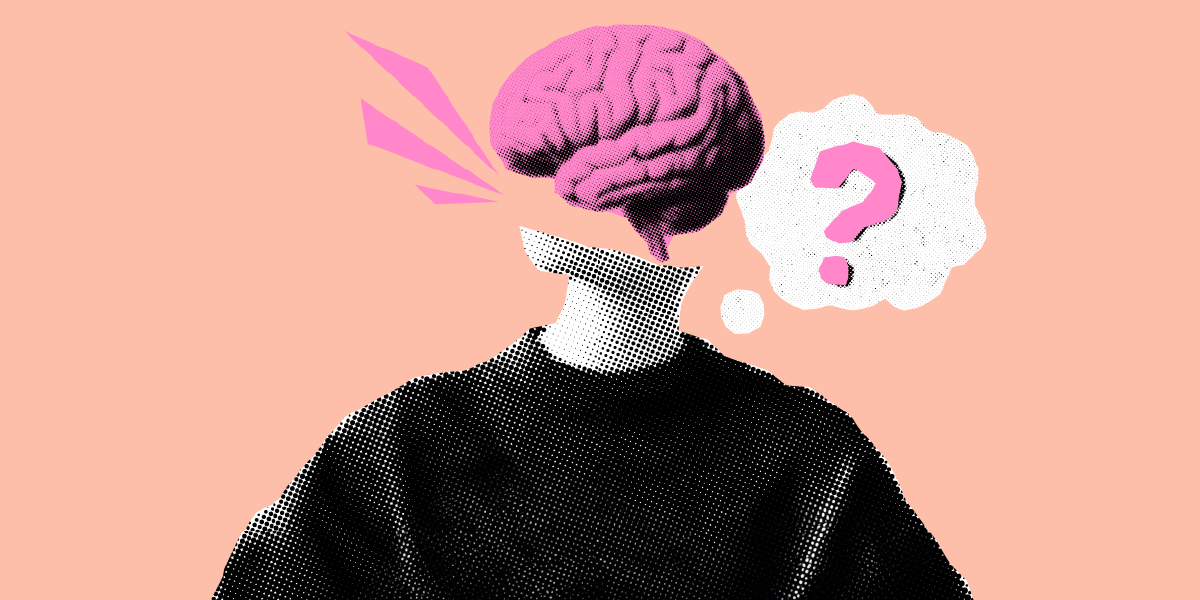
It had been three weeks since I heard from my new friend.
We’d hit it off after meeting at a conference, and I was excited, as it’s not always easy to make friends as an adult.
We kept in touch via text for a while, since we lived a few hours apart. Then, they stopped responding altogether.
I was disappointed, but not surprised. I figured they must have decided they weren’t all that interested in me as a friend, and that was their prerogative.
I forgot about it until I received a text from this person a few weeks later. They were apologetic, and told me that not long after we met, they suffered a terrible loss of a close friend, and then a painful break up.
I was happy to hear from them, and immediately understood the real reason why they’d gone silent. They had their own stuff going on, and that stuff had understandably taken up all their attention.
Only then did I realize I’d walked right into a thinking trap. I assumed, almost subconsciously, that they had cut off contact because I’d annoyed or offended them.
This is an example of the cognitive distortion “personalization,” when we take a situation that is out of our control and turn it into our own personal burden.
It’s a particularly hard thinking trap to spot, so in this article, let’s put it under the microscope and learn how to reframe personalization and take the stress off yourself.
Why our brains personalize everything
Personalization feels logical in the moment, which makes it one of the most persistent thinking traps we face. Why does it happen? There are a number of factors at play.
Your brain hates uncertainty
Humans evolved to survive in environments where understanding cause and effect could mean life or death. When something goes wrong and we don’t know why, our minds scramble to fill in the gaps with any available explanation.
Blaming yourself provides a sense of control in an unpredictable world. If your actions caused the problem, then theoretically different actions could prevent it next time.
This false sense of control feels better than accepting that some things happen for reasons completely beyond our understanding or influence.
Childhood programming runs deep
Many of us learned to personalize problems before we even understood what we were doing. Children naturally assume they’re the center of their universe, so when bad things happen around them, they often conclude they must be responsible.
Parents and caregivers sometimes reinforce this pattern, either intentionally or accidentally. A stressed parent might say “You’re giving me a headache” or “You’re making this harder for me.” These early experiences teach us that we’re responsible for other people’s emotions and reactions, creating a template that follows us into adulthood.
Low self-esteem feeds the cycle
When you don’t think highly of yourself, personalization becomes your default setting. Every ambiguous situation gets filtered through the lens of “What did I do wrong this time?”
People with healthy self-esteem are more likely to consider alternative explanations when things go sideways. They can more easily imagine that someone’s bad mood has nothing to do with them, or that a project failed due to factors beyond their control.
How to overcome personalization thought patterns
As we explain in our main article on thinking traps, there are three steps you can take to relieve the stress and anxiety caused by these thought patterns.
- Pause when you recognize yourself falling into a trap
- Observe, without judgement, what you were feeling, thinking, and doing in that moment
- Find a way to reframe the negative thinking
If you’re here reading this article, odds are you already recognize that you have a tendency (like many people) to fall into personalization cognitive distortion.
So let’s move on to stages two and three. Here are the different scenarios that illuminate the many faces of the psychology of personalization. I’ve given some tips on how you might be able to reframe these thoughts if they feel familiar.
Taking responsibility for others’ emotions
When someone is acting in a way that is out of character, surprising, or hurtful, it’s easy to make quick assumptions about why they are behaving that way.
If you are prone to personalization, you will conclude that their behavior must be because of something you did. This can happen with people you are close with and also with strangers.
For example, you may come home from college break for the holidays and assume your sister is quiet and distant because you hurt her by moving away. Later, you find out she received a poor grade and is worried about showing your parents.
Or maybe the cashier at the grocery store said something rude, and you assume it’s because they didn’t like the way you looked at them or how you piled your groceries on the conveyor belt—even though they were probably just stressed or having a bad day.
When you catch yourself personalizing a person’s emotions, make a list (mental or on paper) of the other possibilities that might be at play.
Start with the realistic reasons. “My sister is having trouble at school” would probably top your list. “It was rush hour at the grocery store” probably would too.
Keep going with as many reasons as you can, even if they begin to sound absurd. “My sister was rejected for the Nobel prize.” “The cashier was embezzling and afraid I caught them.”
List out reasons for as long as you need to, until you start to see that there are far more outcomes than the one you landed on. With so many possibilities, the idea that you did something wrong without knowing it is probably not the reality.
Assuming blame for external circumstances
External factors cause most of the setbacks we encounter, but personalization convinces us we’re somehow responsible for everything that goes wrong. This type of thinking makes us carry guilt for outcomes that were largely or entirely beyond our control.
You might blame yourself when a work presentation doesn’t go well, focusing entirely on the one slide you stumbled over while ignoring that the projector malfunctioned, two key stakeholders called in sick, and the meeting got cut short due to a fire drill. Or you could spend weeks beating yourself up for “ruining” a friend’s birthday party because it rained, even though you had no control over the weather.
This pattern extends to bigger life events too. Students often blame themselves entirely for poor grades without considering factors like unclear instructions, family stress, or inadequate resources. In relationships, it’s often easy to assume fault instead of considering bigger factors at play—like I did in the story at the top of this article.
Start by drawing a clear line between your sphere of influence and everything else. Write down what aspects of the situation you actually controlled versus what you didn’t. For the work presentation example, you controlled your preparation and delivery, but you didn’t control the technical issues, attendance, or scheduling conflicts. When you see the full picture laid out, your actual contribution to the outcome becomes much clearer. Ask yourself what advice you’d give a friend in the same situation. We’re often much kinder and more rational when evaluating someone else’s circumstances than our own.
Interpreting neutral events as personal
Sometimes personalization shows up when we assign personal meaning to events that have nothing to do with us. A delayed email response becomes evidence that someone is avoiding us. Getting passed over for a promotion means we’re not good enough, rather than considering budget constraints or internal politics.
This thinking pattern is especially common in professional settings. When your boss seems stressed during a meeting, you assume you did something wrong instead of recognizing they might be dealing with pressure from their own supervisors. When a client chooses a different vendor, you take it as a personal rejection rather than understanding they might have budget limitations or existing relationships.
Related: How to stay motivated when rejection feels personal
Social media amplifies this tendency. When someone doesn’t like your post or comment, personalization tells you they must be upset with you specifically. Really, they may just not have logged in at the right time, or the algorithm could be working against you, or they may have simply scrolled by without much thought at all.
Practice assuming neutral intent until you have clear evidence otherwise. Most people’s actions stem from their own circumstances, not their feelings about you. Before jumping to personal explanations, brainstorm at least three alternative reasons that have nothing to do with you. Your boss might be dealing with company restructuring. The client might have budget cuts. Your friend might be overwhelmed with work. Remember that you’re probably not on other people’s minds as much as you think you are. Most people are too busy managing their own lives to spend significant time thinking about yours.
Reverse personalization
Personalization doesn’t only work in negative directions. Sometimes we take credit for positive outcomes that had little to do with our actions, which can be just as problematic as blaming ourselves for everything bad.
You might assume your team’s success happened because of your specific contributions, overlooking the hard work of colleagues or favorable market conditions. Or you could take credit when someone close to you achieves something great, believing your support or advice was the deciding factor.
This pattern creates unrealistic expectations for future situations. When you believe you’re responsible for positive outcomes beyond your actual influence, you set yourself up for disappointment when you can’t replicate those results.
Apply the same sphere-of-influence analysis you’d use for negative events. List out all the factors that contributed to the positive outcome, including your role and everything else. Start by making a list of your work accomplishments. It’s important to acknowledge your own hard work and personal successes. But don’t stop there. Acknowledge that most successes result from multiple people, circumstances, and sometimes plain luck working together. Practice giving credit where credit is due. This will build stronger relationships with your colleagues, which is a bonus itself, and help you remember the diverse range of circumstances that came together to help you achieve success.
Overcoming personalization in the long-term
Personalization can show up in so many aspects of life, and you’re already on your way to managing it simply by reading this article and practicing some of these tactics.
It won’t happen overnight, and it is not a self-improvement strategy that has an end goal. Rather, think of it like sharpening a skill or building a muscle. The more you practice these reflection techniques, the easier you will find it to sit with uncertainty instead of taking it on as a burden.
With patience, practice, and self-care, you can free yourself from the anxiety of living a life of personalization.






